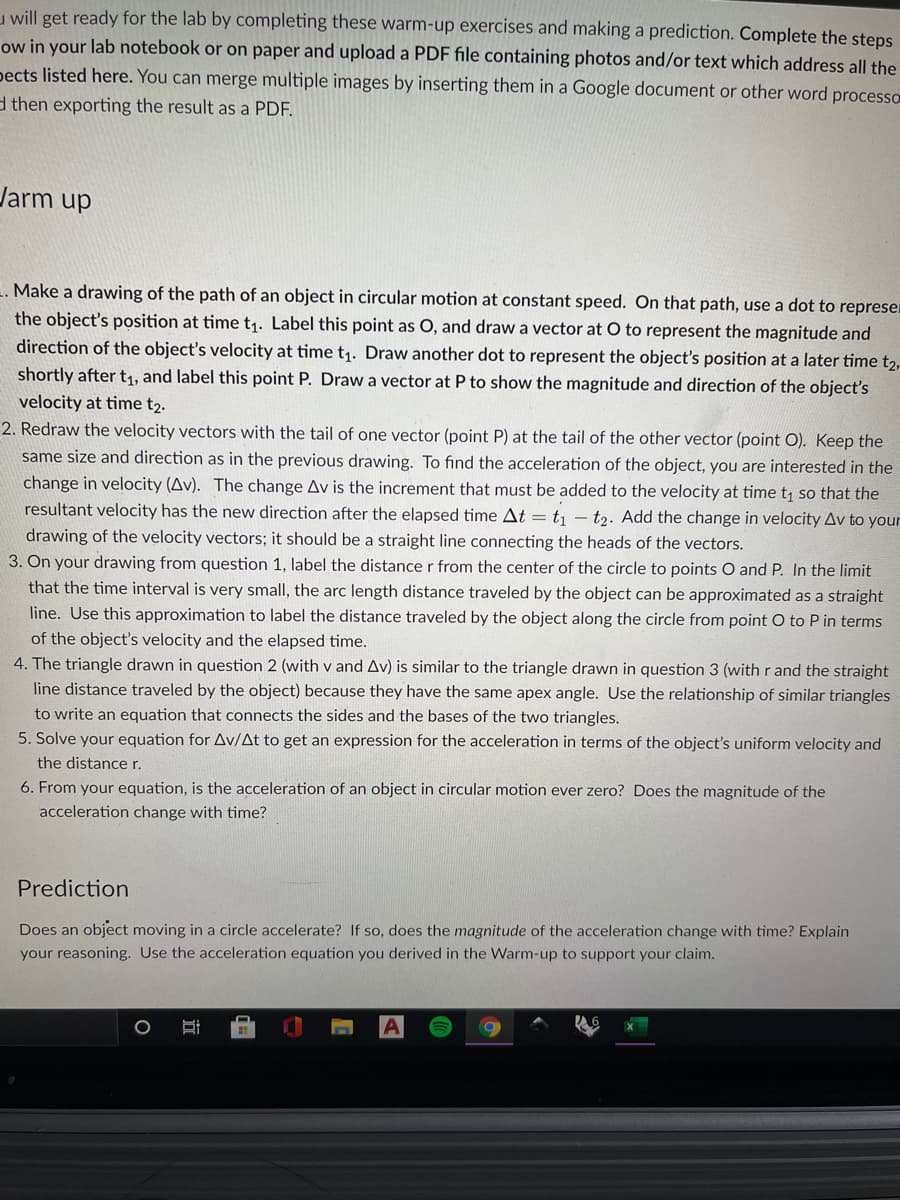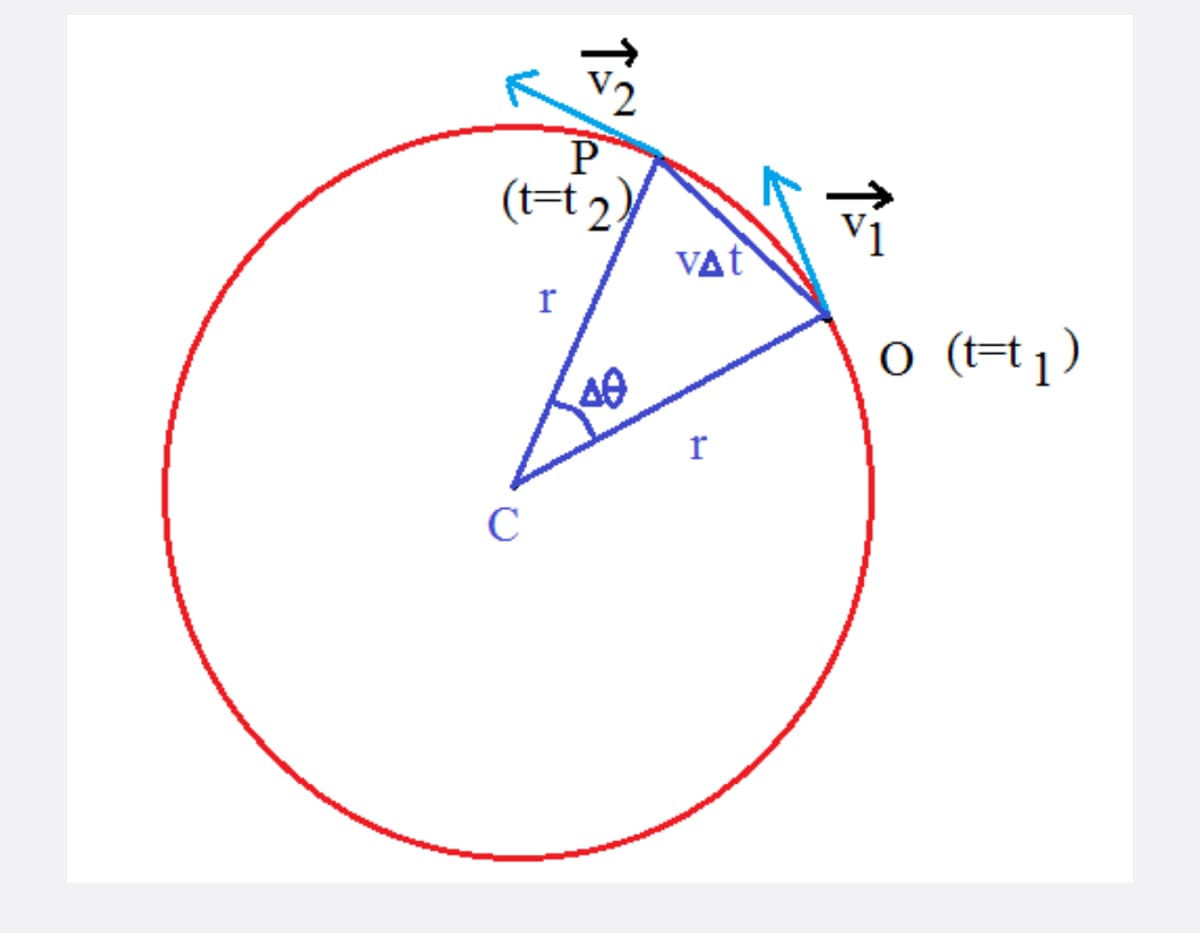Make a drawing of the path of an object in circular motion at constant speed. On that path, use a dot to represe the object's position at time t1. Label this point as O, and draw a vector at O to represent the magnitude and direction of the object's velocity at time t. Draw another dot to represent the object's position at a later time t2 shortly after t1, and label this point P. Drawa vector at P to show the magnitude and direction of the object's velocity at time t2. 2. Redraw the velocity vectors with the tail of one vector (point P) at the tail of the other vector (point O). Keep the same size and direction as in the previous drawing. To find the acceleration of the object, you are interested change in velocity (Av). The change Av is the increment that must be added to the velocity at time t so that the resultant velocity has the new direction after the elapsed time At = tj – t2. Add the change in velocity Av to you the drawing of the velocity vectors; it should be a straight line connecting the heads of the vectors. 3. On your drawing from question 1, label the distance r from the center of the circle to points O and P. In the limit that the time interval is very small, the arc length distance traveled by the object can be approximated as a straight line. Use this approximation to label the distance traveled by the object along the circle from point O to P in terms of the object's velocity and the elapsed time. 4. The triangle drawn in question 2 (with v and Av) is similar to the triangle drawn in question 3 (with r and the straight line distance traveled by the object) because they have the same apex angle. Use the relationship of similar triangles to write an equation that connects the sides and the bases of the two triangles. 5. Solve your equation for Av/At to get an expression for the acceleration in terms of the object's uniform velocity and the distance r. 6. From your equation, is the acceleration of an object in circular motion ever zero? Does the magnitude of the acceleration change with time?
Refraction of Light
Refraction is a change in the direction of light rays when they travel from one medium to another. It is the bending of light when it goes through different media.
Angle of Refraction
Light is considered by many scientists to have dual nature, both particle nature and wave nature. First, Particle nature is one in which we consider a stream of packets of energy called photons. Second, Wave nature is considering light as electromagnetic radiation whereas part of it is perceived by humans. Visible spectrum defined by humans lies in a range of 400 to 700 nm wavelengths.
Index of Refraction of Diamond
Diamond, the world’s hardest naturally occurring material and mineral known, is a solid form of the element carbon. The atoms are arranged in a crystal structure called diamond cubic. They exist in a huge variety of colours. Also, they are one of the best conductors of heat and have a very high melting point.


Trending now
This is a popular solution!
Step by step
Solved in 4 steps with 6 images









